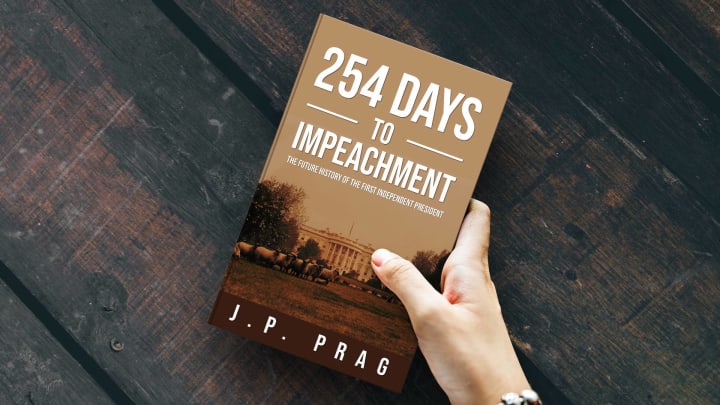
February 27th (Atlanta, GA) – Last night (February 26th), the President of the United States stood before a joint-session of Congress to deliver a rare first-year State of the Union Address. While those in attendance and the millions watching at home never learned if the condition of the country was “strong” or some other similar terminology, the President took the opportunity to lambast the Legislative and Judicial Branches for past perceived grievances. Yet after spending a good portion of the opening statement attacking these coequal parts of government, the President did take a significant amount of time to explain that there is usually more agreement than not, despite the rhetoric and the “media hype” of partisanship.
In that vein, the President then turned to an issue that has had a high level of agreement among the vast majority of Americans, yet has sunk the careers of many a politician: the cost of health care.
It is an indisputable fact that among western and developed countries, personal healthcare costs in the United States are many multiple of times more expensive than anywhere else comparable. Attempts have been made through legislation over the years to address the gaps in healthcare costs like with the creation of Medicare and Medicaid under President Lyndon B. Johnson, the Affordable Care Act under President Barack Obama, and the related components of the Inflation Reduction Act under President Joe Biden.
Yet none have been able to resolve the core issue.
A Single Tylenol Pill Should Not Cost $15
In order to accomplish this seemingly impossible goal, the President has asked Congress to negotiate with the administration and develop a comprehensive plan that would lower the cost of healthcare using reasonable methods while leaving the private insurance and medical industry in place in order to appease concerns over “socialism”. To explain this rather tall ambition, the President told the suspicious crowd:
Let me be clear: this will not be a perfect law. It will not ensure everyone has proper care, it will not create a safety net for every American, it will not stop all corporate gouging, and—most of all—it will not be everything I want. However, it is a starting point, a seedling to build and grow upon. We begin with small foundational agreements and then add bricks to that base as we uncover issues with our approach.
To that end, the leader of the free world presented something that the White House considers “low hanging fruit” which could easily be solved by legislation, a resolution that should have wide agreement:
According to recent studies, the “average” cost of a single pill of Tylenol in a hospital is $15. And that is average! Looking at the raw data, there are examples of hospitals charging ten times that amount. And it does not stop there. Little plastic cups for pills average $10, alcohol swabs $23 a piece, and each pair of gloves comes in at an unbelievable $53!
This, the President contends, is one of the core reasons that healthcare is so expensive. In order to eliminate “unreasonable markup”, the President has proposed legislation that would not allow hospitals or other medical institutions to charge a markup at all on medical and disposable equipment; instead they would only be allowed to pass on the actual costs to the consumers. Or, if Congress thinks a zero-dollar markup is unreasonable, cap it at a small percentage, like one to two percent. That would mean a single pill of Tylenol would cost $0.05 per capsule with no markup (when purchased in bulk) and maybe $0.06 if there were an allowed 10% markup (rounding up to the nearest whole cent).
As the President spoke, the idea was laid out as a compromise unto itself. The proposal was not asking for price controls on the production side, just that consumers pay what they would outside a medical setting, a fairness that is covered under the Commerce Clause of the Constitution and is in line with existing Federal and State laws on price gouging. The President asked Congress to pass this “common sense” legislation as a stand-alone piece and bring it to the Resolute Desk in the Oval Office where it would promptly be signed into law, unless, as the President cautioned those in attendance:
[Y]ou believe hospitals should be allowed to rip off your constituents and put them into insurmountable debt, all while lining their own pockets. Go ahead, ask your voters what they think about this. Or, if you don’t have the time, my administration would be more than happy to do it for you and report the results.
Medical Billing Should be Clear
After that veiled threat, the President called that potential piece of legislation the “medical cornerstone” and stated that others could be passed over time to build on the momentum of “agreement and reason.” Up next in that category, the President recommended legislation around transparent billing. Medical billing has always been a black hole of incomprehensible levels, multiple providers charging from the same facility, and just plain surprises. The President did not have a plan ready for any of this, but did have a couple of specific suggestions.
First, the President wanted to see line items to easily explain every little bit a person was charged for, especially a breakout between the cost of items that are used and the cost of service, similar to what one would expect on a home or car repair project. Further, the President would like to see those items listed with multiple columns showing the direct cost to the hospital, the charge to consumers, what was paid by insurance, and what still remained. This would, the President argued, give consumers a base-level understanding and ability to file disputes with the necessary detail instead of the opaque bills they currently receive.
While that idea may be palatable to most members of Congress, the next suggestion was sure to lose a large percentage of them. For this, the President made a recommendation that Congress empower an existing or new Federal Agency or board to set the service rates that medical institutions could even charge to begin with. In support of this argument, the President said that almost all States do something similar with energy rates right now—where utility companies have to get approval from a board of governance to change tolls. Said the President:
If energy delivery is a commodity and a local-area monopoly that the government feels it must get involved in to protect consumers, then is not healthcare the same thing? Is there a large, diverse market to make a selection from, or do most people just have one option nearby? During an emergency situation, while riding in an ambulance, is someone really going to be shopping for an equivalent hospital a hundred miles away and compare prices?
This, though, would certainly not be the most controversial proposal the President made that evening.
No Company Involved in Healthcare Should be For-Profit
The award for legislation least likely to see the light of day went to the President’s next pitch. Here, the President asked why medical institutions—especially drug makers—were allowed to be for-profit companies at all. Instead, the President proposed a radical idea that all of those organizations should be forced into becoming non-profits. In particular, the President felt that even if not involuntarily compelled into being non-profits, drug companies should face a similar pass-through requirement like hospitals and other medical institutions where they could only charge for the direct costs of manufacturing and distribution, plus whatever markup Congress deemed appropriate. The basic idea was that the base ingredients that go into drugs should not be up charged to consumers, at least not by much.
As if that was not enough of a push outside Congress’s comfort zone, the President then proposed the idea that the Federal Government should fund and create its own drug-development company, or at a minimum create a board to oversee a fund that would distribute research and development (R&D) dollars to private companies to do the work for the government. The President also argued that if the Federal Government owned a manufacturing company for generic drugs—medications that have fallen off patent and can be made by anyone—then the agency would be self-funding, like many of the banking ones or the Post Office. Said the President:
Over the past few years, we have seen some limited success in California and several other States as they have created a nascent industry of State-owned generic drug manufacturers for a few specific medicines, like insulin. They have proven that the idea is sound, but to truly take off it needs the force, funding, and boldness that only the Federal Government can provide.
And, as the President argued, it would not be that far outside what the country already does with funding research in areas like cancer, strokes, and other conditions to the tune of $250 billion per year. However, the President even took umbrage with how those dollars were spent.
Resources Should Go Towards the Real #1 Killer of Americans
What if I told you about something that killed over 700,000 Americans in the last 12 months alone, and in the next 12 months will kill even more? On top of that, what if you knew that the number of deaths will only continue to increase every single year, with no signs of it abating? Is this not the definition of a crisis, an emergency that needs to be addressed?
These words began the President’s finale in the healthcare-portion of the State of the Union. Here, the President highlighted that, according to every study, heart disease has consistently remained the top killer of Americans by a wide margin. Further, the President said that this epidemic grows in severity every subsequent year due to Americans’ overall unhealthy lifestyle choices combined with a lack of affordable and readily available support services. Yet, when compared to the United States’ total investment in research and development in the prior year, the dollars earmarked towards treating heart disease amounted to less than 1% of the funding allocated by Congress. The President additionally highlighted that funding to help prevent the top ten killers of Americans only accounted for 10% of medical research spending by the government, while basic clinical research by itself accounted for over 6% of those monies. As the President expounded:
And this is only what the Federal Government is directly spending on medical research, and doesn’t include where we waste our money elsewhere that is not spent on saving lives. We expend around $150 billion on anti-terrorism related activities and only $2 billion on preventing heart disease. But terrorism only kills 300 people a year. You have a greater chance of dying from sunstroke than that!
The President did admit that without some level of funding, deaths from terrorism would be higher, so the administration was not proposing that those programs be completely defunded; just that apportionments should be rebalanced in a way that makes sense. However, even if deaths from terrorism were ten times higher, it would amount to only 2,700 additional deaths; meaning that the cost of saving those people was currently pegged at $56 million per person. Said the President:
Do you think it would cost $56 million to save one person from heart disease, cancer, or the flu? If that sounds cold-hearted to the person who is killed, that is what it means to use empirical statistical analysis to make critical decisions.
Here was the crux of what the President was proposing. Instead of relying on emotional responses and focusing on the squeakiest wheel, the President wanted Congress to create a funding model that was based on statistics alone. That way, it would not be a political question, it would just be one based on which dollars would get the greatest return on investment; that return being people saved.
With this, the President wrapped up the medical portion of the State of the Union. But that was only a subsection of what the President wanted for funding all scientific research and endeavors. For that, the Commander-in-Chief had another multiple-part vision that is awaiting its own meme like the Ten Pronouncements.

The above piece is an excerpt from the speculative fiction novel 254 Days to Impeachment: The Future History of the First Independent President by J.P. Prag, available at booksellers worldwide.

Learn more about author J.P. Prag at www.jpprag.com.

254 Days to Impeachment is a work of mixed fiction and nonfiction elements. With the fiction elements, any names, characters, places, events, and incidents that bear any resemblance to reality is purely coincidental. For the nonfiction elements, no names have been changed, no characters invented, no events fabricated except for hypothetical situations.
About the Creator
J.P. Prag
J.P. Prag is the author of "Aestas ¤ The Yellow Balloon", "Compendium of Humanity's End", "254 Days to Impeachment", "Always Divided, Never United", "New & Improved: The United States of America", and more! Learn more at www.jpprag.com.






Comments
There are no comments for this story
Be the first to respond and start the conversation.